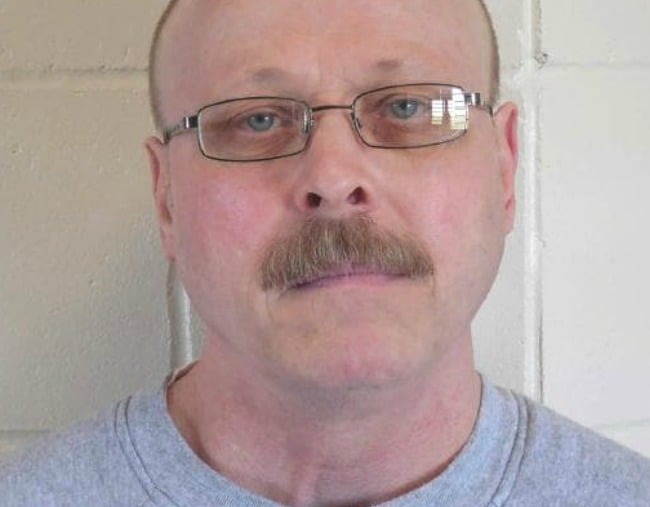
At 10.47am on August 14, Carey Dean Moore was pronounced dead.
The convicted killer was executed in the Nebraska State Penitentiary’s death chamber, with a new cocktail of lethal drugs.
The 60-year-old had been on death row since 1979, after he was convicted of murdering two taxi drivers when he was just 21 years old.
Moore had been due for execution six times in the past, but each time the execution had been halted at the eleventh hour.
This time there was no last minute reprieve.
Moore’s was the first execution in Nebraska in two decades and it will probably go down in history as the most controversial. And it will always be defined by its “missing 14 minutes”.
On the morning of his execution, Moore was strapped to the death gurney. He was then given a fatal four-drug cocktail, which for the first time, included opioid fentanyl.
At 10.24am Moore was administered 37cc of diazepam (Valium), to slow cognition and voluntary muscle movement.
Then, at 10.30am, he was given 46cc of the powerful opioid fentanyl.
According to witnesses, when Moore was given the fentanyl, he began to gasp for air and cough.
At 10.31am the convicted killer’s chest stopped moving and he went still.
At 10.32am he was given 15cc of the paralytic cisatracurium besylate.
And at 10.33am he was administered 120cc of potassium chloride, the drug that was meant to stop his heart.
Witnesses said Moore’s face and hands gradually turned red and then his face turned purple.
The Lincoln Journal Star reports that Moore’s eyes then slightly opened and Corrections Department Director Scott Frakes, who was in the room at the time, said something into his radio.

Top Comments
What medical qualifications, if any, are required for the person or persons who actually injects the drugs into the prisoner ?
They were probably digging around trying to find a suitable vein. Death by lethal injection is supposed to be more humane but the hangman doesn't make the condemned man stand on the trap door for a long time while he gropes around trying to locate his neck.